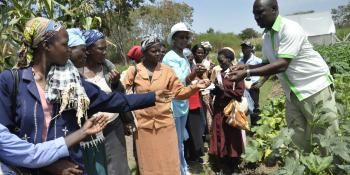Gender divisions and climate variability are hindering a climate-smart East Africa
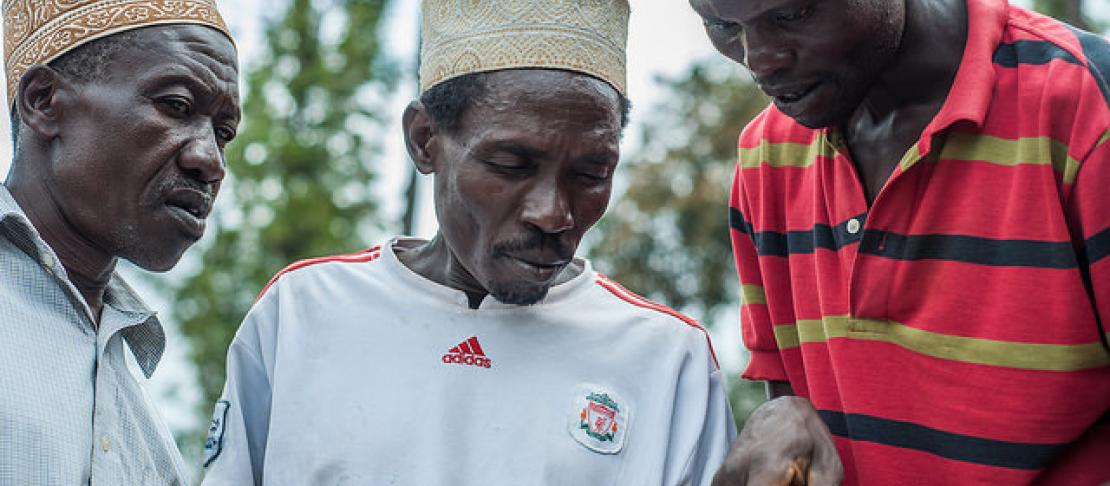
A trial conducted in several east African villages, using Climate-Smart Agriculture Rapid Appraisal, identifies two major challenges to agricultural productivity: climate variability and gendered division of labour.
Climate-smart agriculture (CSA) has been promoted as an option with many benefits. It is expected to increase agricultural productivity and income in a sustainable way, but also to make farming systems more reslient to climate change, while reducing greenhouse gas emissions. The question then is: How can CSA become mainstream practice in the bio-physically and socio-economically diverse environments that characterize East Africa’s smallholder farming systems.
With this question in mind, the International Center for Tropical Agriculture (CIAT) and partners developed a Climate-Smart Agriculture Rapid Appraisal (CSA-RA) tool, for prioritizing CSA across diverse landscapes.
Read more here: Simple, yet comprehensive: A Climate-Smart Agriculture Rapid Appraisal prioritization tool for outscaling CSA practices
The (CSA-RA) tool has already been tested in four districts in northern Uganda (Gulu, Nwoya, Kitgum, and Adjumani) and in the Southern Agriculture Growth Corridor of Tanzania (Kilolo, Kilosa, Bagamoyo and Mbarali).
Challenges facing farmers in Uganda and Tanzania
The first steps in targeting CSA are to understand the existing agricultural challenges and to identify the benefits of introducing appropriate technologies. The CSA-RAs in Uganda and Tanzania identified climate variability as a great challenge in agriculture production. In particular, farmers pinpointed unreliability of the onset and cessation of the rains, uncertainty about the duration of the rainy season, occurrence of too much rainfall, and droughts. Both male and female farmers reported an increase in pests and diseases associated with too much rainfall, water scarcity, famine, loss of crops and livestock.
Already, farmers have adaptation options which include charcoal burning, brick making, sale of livestock, engaging in small businesses, irrigating crops along valley bottoms and dependence on remittances from their kin working in urban centers. A strong concern among women is that men often adapt by migrating to urban areas and abandon their families to seek paid employment.
Gender and CSA implementation
As one might expect, gender impacts on views of climate variability. In Tanzania's Kilolo district, for instance, women and men described weather events and impacts that had occurred in previous years in different ways.
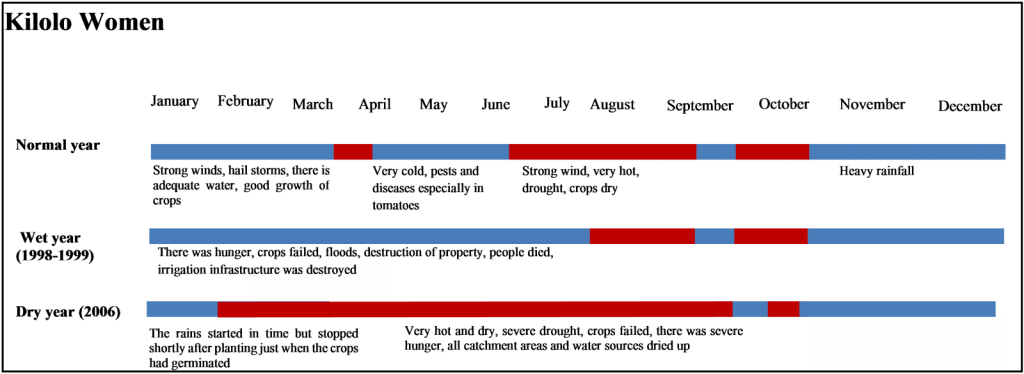
Normal, wet (1998) and dry (2006) years, as perceived by female farmers of the Kilolo district in Tanzania
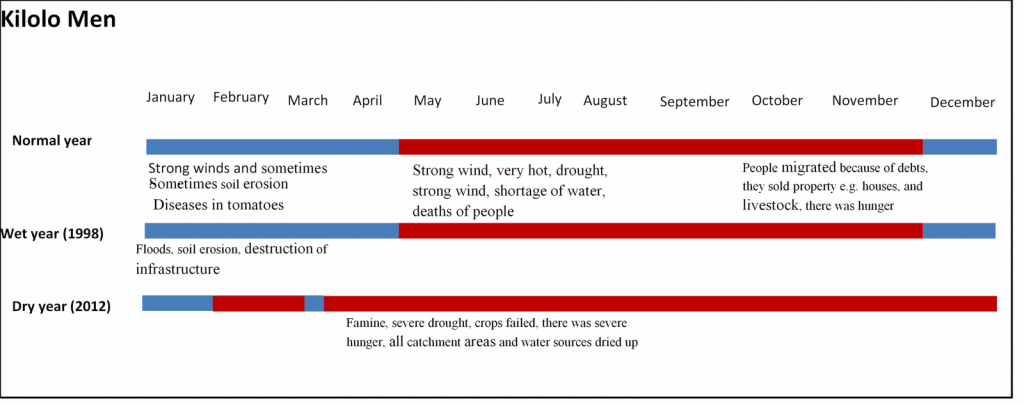
Normal, wet (1998) and dry (2012) years, as perceived by male farmers of the Kilolo district in Tanzania
Cropping calendars by traditional gender groups revealed differences in the division of labor in terms of both crops and livestock. Marketing of agricultural produce is mainly considered a man’s activity as women are perceived to be poor negotiators and deemed unable to effectively source for markets. This suggests that there is a need for empowering women with negotiating skills and market information.
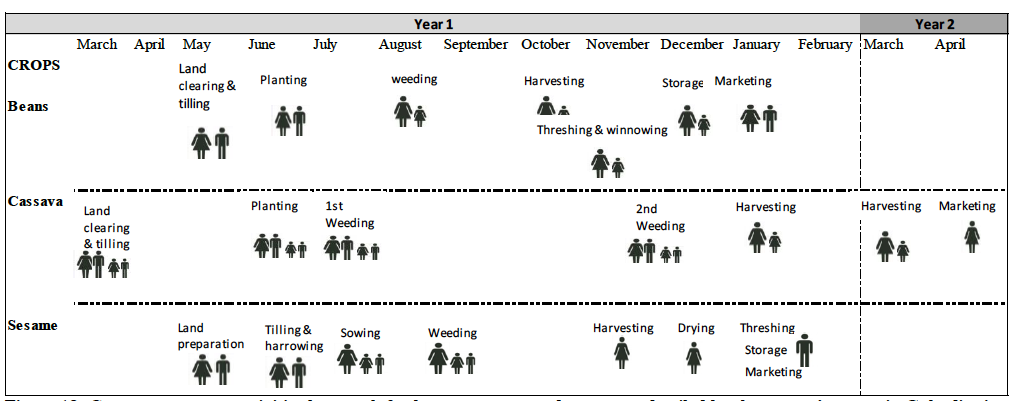
Example of a cropping calendar developed during the CSA-RA. Crop management activities by month for beans, cassava and sesame as detailed by the women’s group in Gulu district. Logograms indicate whether men or woman undertake the activity.
Institutional mapping with Venn diagrams also indicated gendered differences in resource and information flows. These data are vital to recognize key institutions and entry points for men and women.
In conclusion, using the CSA-RA tool enables prioritisation of climate-smart agriculture with an understanding of gendered challenges, priorities, perceptions and impacts.
Click for more information about the tool
Caroline Mwongera is a Postdoctoral Fellow at CIAT - Kenya. Leigh Winowiecki, Kelvin M. Shikuku, Wendy Okolo, Jennifer Twyman and Peter Laderach also contributed to this blog. Editing by Vivian Atakos, Communication Specialist, CCAFS East Africa



